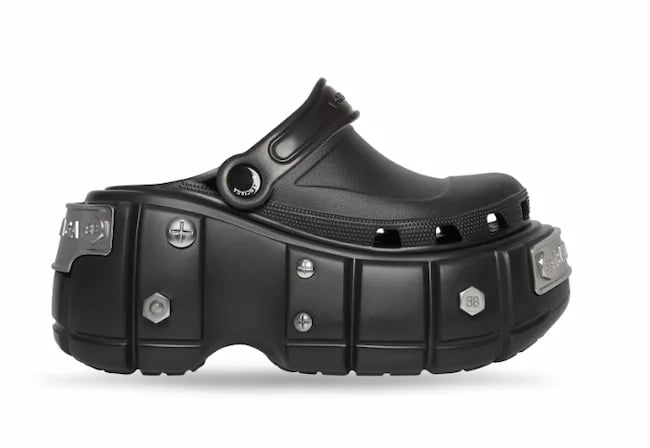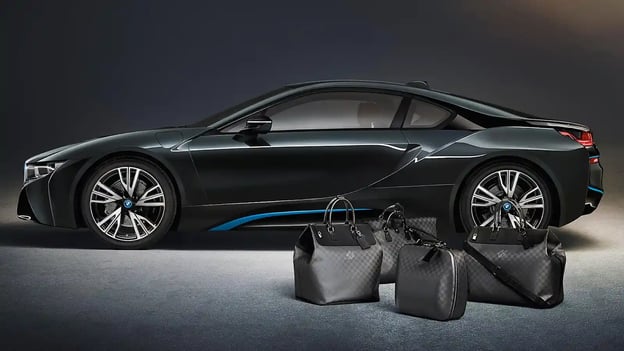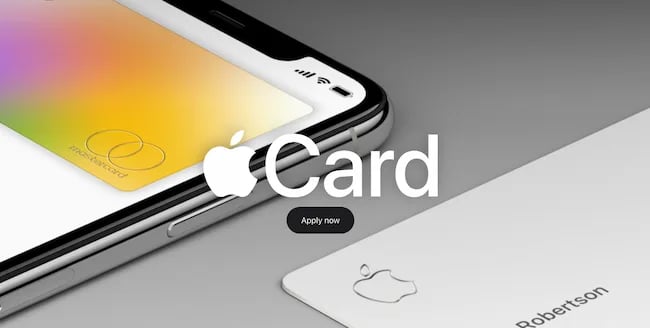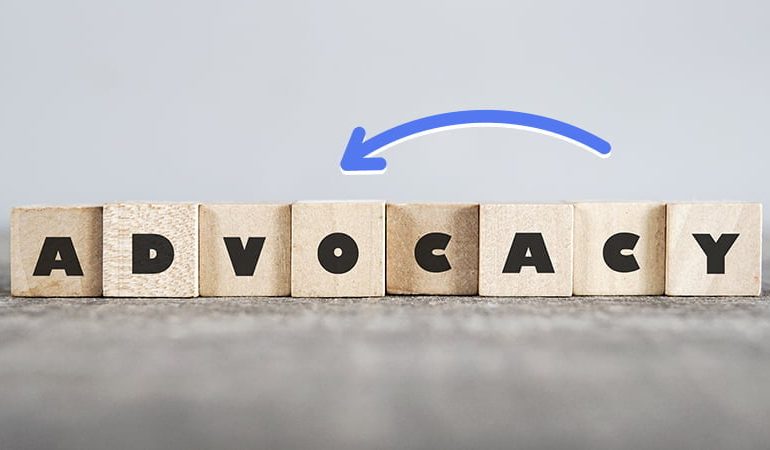Co-branding is a powerful tool for businesses to pool their resources, which frequently results in higher brand awareness and revenue as well as lower individual expenses and risk. This approach is widely used by businesses to develop worthwhile items and expand into untapped consumer areas. It could be helpful for you to comprehend this crucial marketing idea if you work in a company and marketing.
This page defines co-branding, explains its distinction from co-marketing, and provides a list of the kinds, advantages, and real-world applications of this marketing tactic.
What is Co-branding?
Co-branding, sometimes referred to as a brand partnership, is a marketing tactic when two or more companies form an alliance for the advantage of all involved. Under this arrangement, partners combine resources such as capital, technology, and experience to develop a new good or service that offers clients something extra. Usually, this product has a distinct brand name and emblem of its own.
Companies with similar values, missions, and target customer markets frequently form brand partnerships. Partners in co-branding initiatives that are successful may benefit from higher revenue, improved reputations, and a wider consumer base. Because all partners assume the risk of loss by entering into this agreement, this method may also be more financially feasible than other marketing initiatives.
Co-marketing vs. co-branding
Co-marketing is the practice of two businesses coordinating their marketing initiatives without necessarily developing a brand-new tangible good or service. For instance, a car manufacturer and a music streaming service may decide to co-market. These partners might employ an advertisement to promote the car’s sound system’s quality as well as the features of the music streaming service.
Co-branding, on the other hand, is the practice of collaborating with other companies to create a new brand for a good or service. For instance, an ice cream firm and a candy brand might collaborate to develop a new ice cream bar with a candy flavor. Business executives who choose to co-brand with one another pool their resources and ideas to create and successfully promote a new good or service.
Types of Co-branding Strategies
Here are some common types of co-branding strategies:
Ingredient co-branding
In this kind of partnership, business leaders decide to use the ingredients or components from one brand in another brand’s product. Each partner in these agreements is usually a major, recognizable brand in their industry, and each product typically has unique patented qualities. By collaborating on a product, partners can capitalize on the reputability they already have among consumer markets.
Same-company co-branding
Same-company co-branding is a method for advertising multiple in-house brands through the development and promotion of a single product. Large food conglomerates often use same-company co-branding to promote their new products. This form of co-branding only involves one company but may feature collaborations with subsidiaries.
National to local co-branding
National to-local co-branding occurs when small local businesses partner with a nationally known brand. The goal of this partnership is to increase national brand awareness while increasing small business revenue. For example, credit card companies often co-brand with department stores and other small retailers. Vehicle manufacturers may co-brand with local car dealerships.
Joint venture or composite co-branding
A joint venture or composite co-branding is an alliance between two or more well-known companies with the goal of presenting a new product or service that couldn’t exist individually. This can include creating an entirely new product together or improving an existing product. An example of this is when a streaming service platform partners with film studios to create or host movies and television shows.
Multiple sponsor co-branding
Multiple sponsor co-branding occurs when two or more companies pair up to share technology and promotional events. Professionals use multiple sponsor co-branding in athletic events, concerts and attention-grabbing stunts. Each company involved often earns an opportunity for increased sales, brand recognition or reputation.
Co-branding can be beneficial to all parties involved, including the consumers who purchase the products or use the service. Here are a few of the most notable benefits of co-branding for companies:
- Increased customer base, including customers in new demographics
- Boosted sales
- Creation of better quality products
- Generation of a royalty income
- Strengthened customer loyalty
- Enhanced brand recognition
- Increased credibility and respectability
- Sharing of the financial burden for marketing, technology development and promotional events
- Revenue from mutually produced technology
- Sharing of risk across all partners
Co-branding Examples
Here are a few examples of co-branding partnerships:
1. GoPro & Red Bull
GoPro doesn’t just sell portable cameras, and Red Bull doesn’t just sell energy drinks. Instead, both have established themselves as lifestyle brands — in particular, a lifestyle that’s action-packed, adventurous, fearless, and usually pretty extreme. These shared values make them a perfect pairing for co-branding campaigns, especially those surrounding action sports.
To make the partnership work, GoPro equips athletes and adventurers from around the world with the tools and funding to capture things like races, stunts, and action sports events on video — from the athlete’s perspective. At the same time, Red Bull uses its experience and reputation to run and sponsor these events.
“GoPro camera technology is allowing us to complement the programming by delivering new athlete perspectives that have never been seen before,” said Sean Eggert, Red Bull’s former VP of sports marketing. The collaboration continues to use exclusive GoPro content to enhance both companies’ growth.
- Why the Stratos Co-Branding Campaign Works
While GoPro and Red Bull have collaborated on many events and projects together, perhaps the biggest collaboration stunt they’ve done was “Stratos,” in which Felix Baumgartner jumped from a space pod more than 24 miles above Earth’s surface with a GoPro strapped to his person. Not only did Baumgartner set three world records that day, but he also embodied the value of reimagining human potential that defines both GoPro and Red Bull.
2. Rachel Comey, Victor Glemaud, Sandy Liang, Nili Lotan & Target
- Co-branding Campaign: High-End Fashion
Anyone who’s designer-conscious knows high fashion and Target aren’t exactly the same caliber regarding quality. Dresses by designers like Sandy Liang go for around $600, whereas dresses sold by Target go for more like $35 a pair. See what I mean?
Read Also: What is Brand Advocacy?
But that discrepancy in pricing is exactly why these designers and Target brands decided to partner with one another. To support its brand positioning as trendy and fashionable, Target has paired with high-end fashion designers Rachel Comey, Victor Glemaud, Sandy Liang, and Nili Lotan to offer exclusive branded items for a limited time.
- Why Target Co-Branding Campaign Works
In this exchange, the high-end designers can expose their name to a new generation of potential consumers, who will increasingly aspire to own more pieces from those high-end collections while furthering the idea that Target can be a store to find fashion-forward clothing.
3. Joybird & Sherwin-Williams
- Co-branding Campaign: Being Boldly Original
The Joybird home lifestyle brand and paint company Sherwin-Williams did a co-branding campaign when they partnered together to curate an eclectic collection of home furnishings and color palettes. Together, the two brands created an exclusive product line of paints and room design inspiration that helped customers easily select paint colors to complement their furniture choices.
- Why the Sherwin-Williams Co-branding Campaign Works
These two businesses saw the opportunity to run a campaign that exposed their product and copywriting to brand-new audiences. This intersection of target demographics could have brought in new business for each other and could have paved the way for future co-branding collaborations if proven mutually beneficial.
4. Balenciaga & Crocs
- Co-branding Campaign: Hard Crocs
Balenciaga and Crocs have been making headlines with their fun fusion of aesthetics since 2018. But the most recent pairing got a boost from Eliot Page on the red carpet in 2022.
These brands clearly align in their dedication to innovation and individuality. As Balenciaga Creative Director Demna states in GQ “I am not interested in anything average, including the average consumer…if someone is personally offended by Crocs, there might be a more serious problem within that person than the design of a shoe.”

- Why the Balenciaga Co-branding Campaign Works
This high fashion brand uses Crocs’ accessible shoe brand to expand and reinforce its experimental ideas. Then, it places those experiments in public spaces to create excitement and engagement with the audiences for both brands.
5. Kanye & Adidas
- Co-branding Campaign: Yeezy
Kanye West partnered with Adidas in 2015 to develop a high-end footwear line called Yeezy. The combination of Kanye’s personal brand and Adidas’ growing streetwear segment made for robust company earnings and brand growth.
However, the brand cut ties with Yeezy in October 2022 due to harmful remarks and behavior, leading to a $655 million loss in sales at the end of that year. The brand began selling Yeezy merchandise again in May 2023, donating some of the proceeds to social justice organizations.
While initially an excellent co-branding partnership for both partners, some might also see this as a brand partnership failure.
6. BMW & Louis Vuitton
- Co-branding Campaign: The Art of Travel
Car manufacturer BMW and designer Louis Vuitton may not be the most obvious pairings. But if you think about it, they have a few important things in common. If you focus on Louis Vuitton’s signature luggage lines, they’re both in the business of travel. They both value luxury. And finally, they’re both well-known, traditional brands that are known for high-quality craftsmanship.
These shared values are exactly why this co-branding campaign makes so much sense. In their partnership, BMW created a sports car model called the BMW i8, while Louis Vuitton designed an exclusive, four-piece set of suitcases and bags that fit perfectly into the car’s rear parcel shelf.
Although the four-piece luggage set goes for a whopping $20,000, the price is right for the target customer, as the BMW i8 starts at $135,700. A price like that kind of makes that luggage set seem like a drop in the bucket.
Not only does the luggage fit perfectly size-wise, but its design and appearance fit perfectly with BMW’s image: sleek, masculine, and high-quality. Turns out that both the luggage and some parts of the car’s interior use carbon fiber, strong-yet-light composite material.
- Why the Louis Vuitton Co-branding Campaign Works
Both brands knew their target market desired luxury and meticulous craftsmanship. By selling complimentary high-quality products, the brands successfully garnered attention from respective loyal customers.
7. Starbucks & Spotify
- Co-branding Campaign: First-of-Its-Kind Music Ecosystem
Starbucks scaled up a premium coffee shop experience into a massive global brand, using music to create an ambiance around its coffee. Spotify, a music streaming platform, has powered almost 25 billion hours of listening worldwide. Starbucks and Spotify forged an innovative co-branding partnership to build a “music ecosystem”, offering artists greater access to Starbucks consumers and giving Starbucks access to Spotify’s expansive discography.
- Why the Spotify Co-branding Campaign Works
Through the initiative, Starbucks employees get a Spotify premium subscription, with which they can curate playlists (that patrons can access through the Starbucks Mobile App) to play throughout the day in the shop. This music ecosystem is designed to expand the coffeehouse environment that Starbucks is known for while giving artists greater exposure to Starbucks customers.
The “musical-ecosystem” partnership is mutually beneficial, allowing the companies to reach the other’s audience without sacrificing their brand.
8. Apple & MasterCard
- Co-branding Campaign: Apple Pay
Sometimes, co-branding partnerships aren’t just cool projects between two companies — they actually have practical value when the companies work together.

When Apple released the Apple Pay app, the brand effectively changed how people perform transactions. This app allows people to store their credit or debit card data on their phones, so they can use them without physically having the card with them. But for this app to succeed, it needs credit card companies to integrate with this technology. By the same token, credit card companies also face more competition if they aren’t compatible with the latest consumer purchasing tool.
- Why the Mastercard Co-branding Campaign Works
To get out ahead of its competition, MasterCard became the first credit card company to allow its users to store their credit and debit cards on Apple Pay. This relationship continued to be useful for both Apple and Mastercard with the release of the Apple Card. MasterCard not only shows continuous support of a major consumer tech developer in this partnership — it evolves with its customers in how they choose to make purchases.
9. Airbnb & Flipboard
- Co-branding Campaign: Experiences
You’ve probably heard of Airbnb, the room-sharing application that allows you to find convenient lodging hosted by real people. But its partner, Flipboard, might not be on your radar.
Flipboard is a news aggregator that collects news and topical content that users are sharing on social media, and allows you to “flip” through the material much like a social media feed. Well, Airbnb teamed up with Flipboard to create Experiences, which serve Airbnb users with lifestyle content tailored to their interests and shared by people with similar interests as the reader.
-Aug-05-2022-03-56-17-17-PM.jpeg?width=548&height=337&name=21%20Examples%20of%20Successful%20Co-Branding%20Partnerships%20(And%20Why%20Theyre%20So%20Effective)-Aug-05-2022-03-56-17-17-PM.jpeg)
- Why the Flipboard Co-branding Campaign Works
The ongoing campaign recently led to another co-created product called Trips, which allows Airbnb users to connect with hosts with common interests and actually book these experiences when traveling. This partnership is an impressive example of how businesses can connect their customers with information that caters to their individual interests and drives product usage as a result.
Even if you might not have the same budget as the brands mentioned above, you can still learn from their inventiveness, narrative prowess, and resourcefulness in combining their disparate brands in a way that benefits both of them.
We hope this helps you discover some ideas for your next amazing launch as you look for the ideal co-marketing partner for your business and create a successful campaign.


